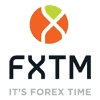Trading the FOMC Meeting
The Federal Open Market Committee (FOMC) meets eight times a year to discuss and set US monetary policy. Each meeting is an important date on most traders’ economic calendars. Speculation in the run-up to the meeting and the fallout afterwards can spur flurries of volatility as markets react to the decisions made by this branch of the Federal Reserve.
Anticipation typically ramps up as the date approaches, partly because of the relative secrecy of the meetings. They are closed to outsiders, with only the seven governors of the board and five Federal Reserve Bank presidents in attendance. The general outcome and the key decisions are announced at a press conference immediately afterwards, but the full minutes are not published until three weeks have passed – another date on which you can generally expect increased market movement.
What does the FOMC decide?
In regards to potential trading opportunities, the markets primarily tend to rise or fall in reaction to prospective changes to interest rates. The FOMC takes a position on what kind of intervention (if any) the US economy needs after reviewing a raft of economic data. It introduces policies to either raise or lower interest rates depending on whether it wants to slow or drive inflation to balance out the money supply and ensure price stability. The Fed targets an annual inflation rate of 2%.
The outcome of the FOMC meeting is therefore an opportunity for traders to get a glimpse into the official view of the health of the US economy. The committee takes several key economic barometers into account, including job gains, the unemployment rate, growth of household spending, business fixed investment and, of course, inflation.
The FOMC meeting remains an important economic event outside of the US too. Because the US is the largest economy in the world, the FOMC has a trickle-down effect that ripples beyond its national borders. It’s important to consider as well that the committee also scrutinises global economic trends and developments when discussing policy; the committee leaning hawkish or dovish can be a useful insight into where other central banks may land.
Which financial instruments are directly affected by the FOMC?
The four major asset classes that are impacted by the FOMC are:
Dollar currency pairs. Speaking generally, higher interest rates drive the value of a currency up. This is because a higher rate tends to attract foreign investment, buoying demand.
Indices. Rising interest rates put pressure on consumer and business spending, pushing down share prices. US indices therefore often feel the impact of FOMC speculation.
Bonds. When interest rates fall, bond prices rise and vice versa.
Gold and the dollar have a broadly inverse relationship, meaning a weakened dollar can boost the precious metal’s value. Moreover, gold’s status as a stable safe-haven asset can attract investors in the event that the FOMC decision forecasts stormy times ahead for the global or US economy.
FOMC trading considerations
Trading the FOMC as a risk event can offer opportunities to day traders in particular. Speculation as to the Fed’s moves is often so charged weeks in advance of the meeting that any expected adjustment to interest rates is already priced into the market by the time of the announcement.
This means that if the unexpected happens, the market reaction can be dramatic. To take advantage of this turmoil, it’s essential to have a good understanding of the prevailing sentiment and to be able to act quickly if the Fed surprises and destabilises the markets.
Traders with a longer-term outlook should also be aware of the market-moving potential of the FOMC. The actual effect of any changes to interest rates typically takes over 12 months to be felt fully across the economy. Therefore, this time lag should be factored into any investment decisions when researching a potential instrument.
Are you ready to take a position on the next FOMC meeting? Trade the dollar, CFDs on US indices and movements on gold with an award-winning broker. Open your FXTM account today.
Disclaimer: This written/visual material is comprised of personal opinions and ideas. The content should not be construed as containing any type of investment advice and/or a solicitation for any transactions. It does not imply an obligation to purchase investment services, nor does it guarantee or predict future performance. FXTM, its affiliates, agents, directors, officers or employees do not guarantee the accuracy, validity, timeliness or completeness of any information or data made available and assume no liability for any loss arising from any investment based on the same.
Risk Warning: There is a high level of risk involved with trading leveraged products such as forex and CFDs. CFDs are complex instruments and come with a high risk of losing money rapidly due to leverage. 90% of retail investor accounts lose money when trading CFDs with this provider. You should consider whether you understand how CFDs work and whether you can afford to take the high risk of losing your money.


